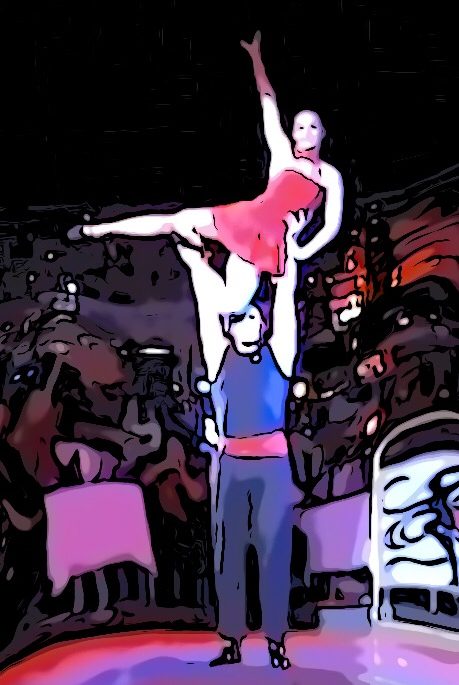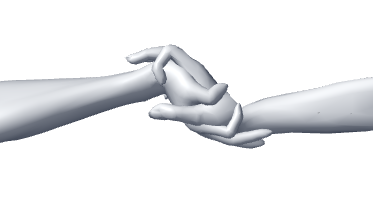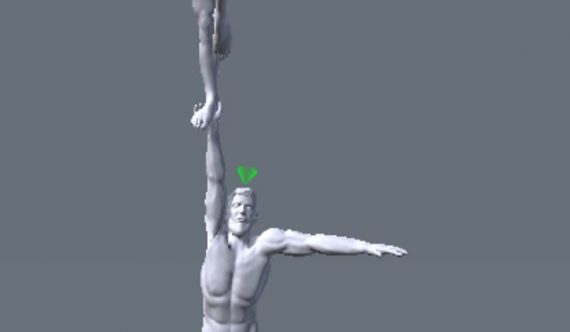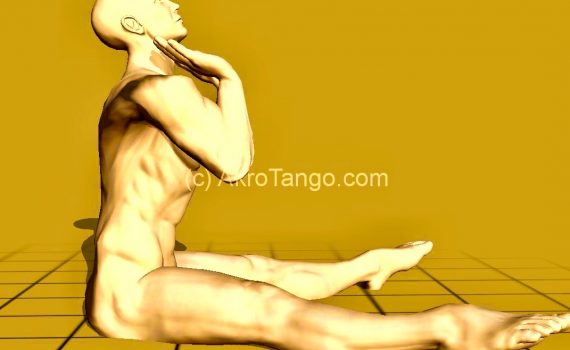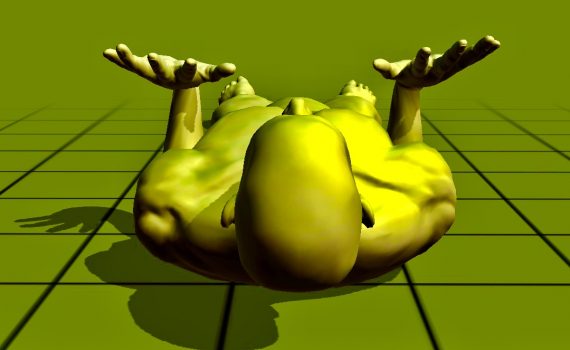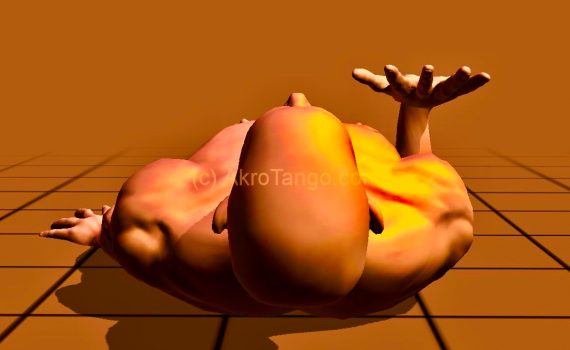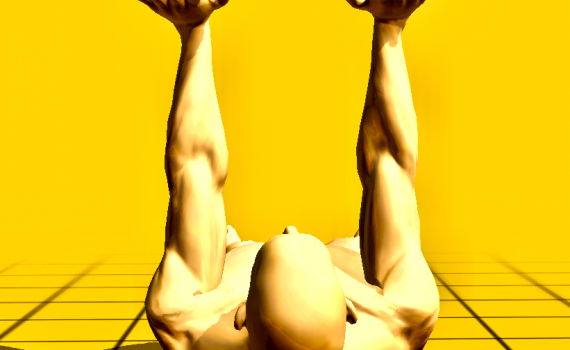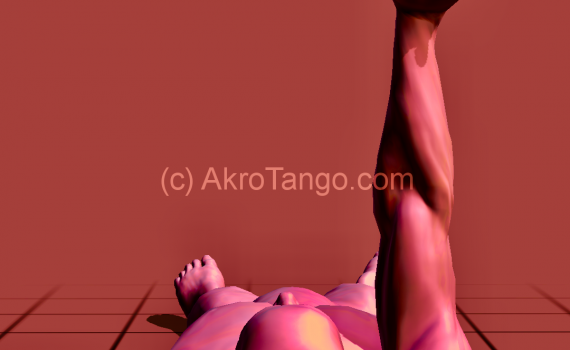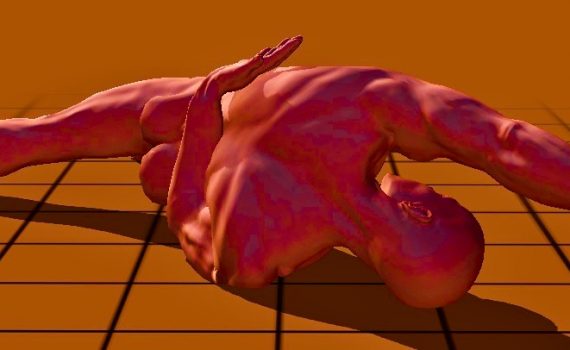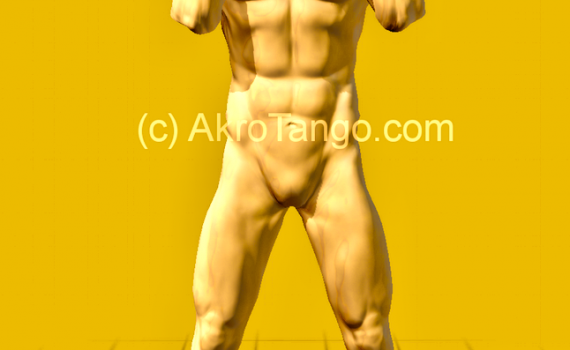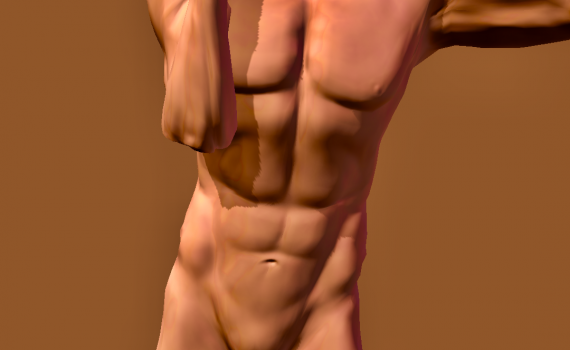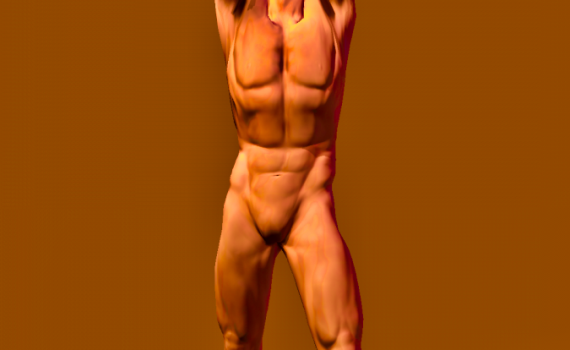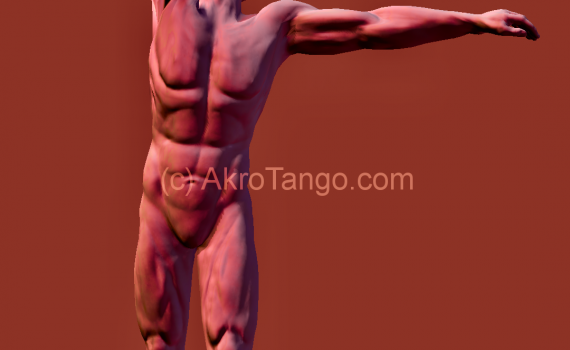In principle, I recommend the balancing on the palm! Watch your hand in the push-up position with straight arms. Try to keep your weight only on your fingers … It is possible, but unnecessarily difficult. And now watch the angle between forearm and back of the hand. Usually the possible range is between 90 ° – 270 ° DEG, but keeping a weight on the back of the hand is unnecessarily difficult too. I have met people who could move their wrist until the touch with the forearm on both sides. In the partner balance, only the range of 100 […]
Kategorie: on the hands
Pitching is a trick for the good advanced, but can be increased to any difficulty as desired. As preparation I recommend: the flyer jumps up from the side (lying base) with a quarter turn to the one-legged standing onto the one-armed at straight arm, the flyer jumps up from the front (kneeling base) with a half turn to the one-legged standing onto the one-armed at the short arm and the flyer jumps up from the front (standing base) with a half turn to the standing on the hands with straight arms. This trick starts in the deep squat for the […]
The base can choose in this position whether he feels more comfortable sitting or kneeling. Kneeling, he can use the power from the thighs for a possibly necessary high relieving, but at the expense of stability. Short arm: The hands of the base are about shoulder width, as otherwise inwards turned hands of the flyer is the result. The stability is ensured by the alignment of the line of power in the direction of the center of gravity of the flyer. This is not a position for beginners, as they often tend to balance by using a hollow cross! In […]
Snake or butterfly? The appearance is deceptive! Science has not yet succeeded in accommodating the stability and functionality of the hands in such a compact design. We are used of being able to achieve almost anything with them. And yet they are sensitive like the wings of a butterfly. Anyone who has had a tennis or golf arm knows what I am talking about. The most important form of balancing for the base is the one with the hands. These have to balance in strangely twisted positions and compensate significant shearing forces. And without his hands the possibilities of the […]
The elbows prop up at the ground as close to the hips as possible. The hands remain in the area of the upper arm! The base should expect that his hands will be shear to the outside. If necessary, the hips can also be lifted slightly to lean the hands at it and stabilize them.
Not meant is a short-term one-arm balance due to a high relieve. However, as soon as the entire weight arrives on the arm, the risk of shearing is very great. This not only causes pain in the base’s wrist, but can also cause the flyers foot to kink away. If necessary, the base can lean the hand at the hip. Be sure to keep your elbows as close to the body as possible! I can only imagine of two sensible positions of the flyer: 1-leg standing one-armed-handstand In all other positions either the ground is too close, or the […]
The hands should stay over the shoulders. Initially, the base tends to hold hands at head height. At a load in the middle of the hand, however, the line of force is not right. The result is that the hands get bent towards the head, which can stabilize the base only with a lot of force. To increase the lateral stability against rolling, legs can be straddled.
One of the most difficult positions of the base, because he can balance little with his straight-arm. The hand should always keep above the shoulder within this position. The ball of the thumb stays under pressure → does not yield and also does not create a cavity in the palm of your hand! If the free hand is used for stabilization, it supports the ball of the thumb of the balancing hand. Initially, the free hand will stabilize the Einarmer, and then release carefully. Some flyers immediately feel the loss of stability and break off. The free shoulder stays on […]
Balancing on one-arm with the elbow on the ground requires a very precise perception of the base for the correct force line, otherwise it will shear off very quickly. What should not be underestimated also at this altitude. Therefore and also because the view to the flyer is very limited, the one-armed is shored in both positions. However, special attention is always on the stability of the wrist, so the flyer does not have to stand uphill. 1. Lying sideways, the forearm is leaning at the back of the back and 2. Lying on the stomach, the hand shore itself […]
A position with considerable risk, as the base does not see the flyer → Safety. For tricks like the Chinese roll (= spring roll, ..) I advise the base to wear a long T-shirt to prevent a mat burn on the elbows. This lateral position is neither easy to reach for the flyer nor the base. The base must stabilize the lower arm at the back of his back and the wrist should not become flatten when loaded. If necessary, he may also shore up the wrist on the back. For the flyer, the differently long arms of the base […]
Priority of the base is always the maximum stability. A stable balance is clearly visible because of the straight line of force. Just like a stalagmite in the salt grotto merges with the stalactite to form a pillar, base and flyer form a stable pillar in balance. If this line is not correct, the viewer is more likely to get the impression of a medium strong earthquake. Balancing the flyer with the hands while standing is one of the most important basic skills for partner acrobatics. In fact, the possibilities are limited more by the imagination of acrobats than by […]
The base holds his hands approximately shoulder width, as he would turn the hands of the flyer inwards when positioning more narrow. The palm is open so that the flyer has the largest possible space available. The thumbs are as close as possible to each other. The wrist is located above the upper arm and must never come before the elbows. The lower arms are aligned in the direction of the center of gravity of the flyer to ensure good stability against shear forces. The position “Base standing, short arm” is an important starting position for dynamic tricks in duo-acrobatics […]
In order to avoid shear forces when to enter the one-armed, the flyer must learn to lean actively from the middle of the body in the desired direction laterally. The axis of rotation for the handstand is the shoulder and when standing the hip! If the base does not prevent this leaning, the weight of the flyer tilts on one arm in a controlled manner until the center of gravity reaches above the axis of rotation and the base’s carrying hand. The base follows this tilting with his elbow … Then, when the weight has almost completely arrived in the […]
The balance on the straight arms takes place exclusively over the legs. Again, the picture of balancing a huge ball is very helpful. As soon as the flyer starts to tip out of line, it creates a rotation that balances the base as fast as possible. Simply staying with your hands under the flyer’s focus is not enough! Correcting with the shoulder or elbow inevitably leads to a bent line of force. This in turn results in either a hollow cross, or wastes a lot of power. Not to mention the lack of appeal for the audience. The lying flyer […]
This balance is relatively easy as long as the flyer is stabilized (e.g., sideways flyer or shoulderstand) or by the other hand of the base (e.g., cross-breaker at the leg or knot handstand at the upper arm). However, the balance without some form of stabilization becomes difficult. The entrance usually takes place via one of the stabilized positions … which are already manageable by advanced bases. Without picking up the residual weight from the stabilizing arm, this balance starts extremely shaky. If you have not automated the pick-up, you should practice it again with simpler positions (for example, with lying […]
